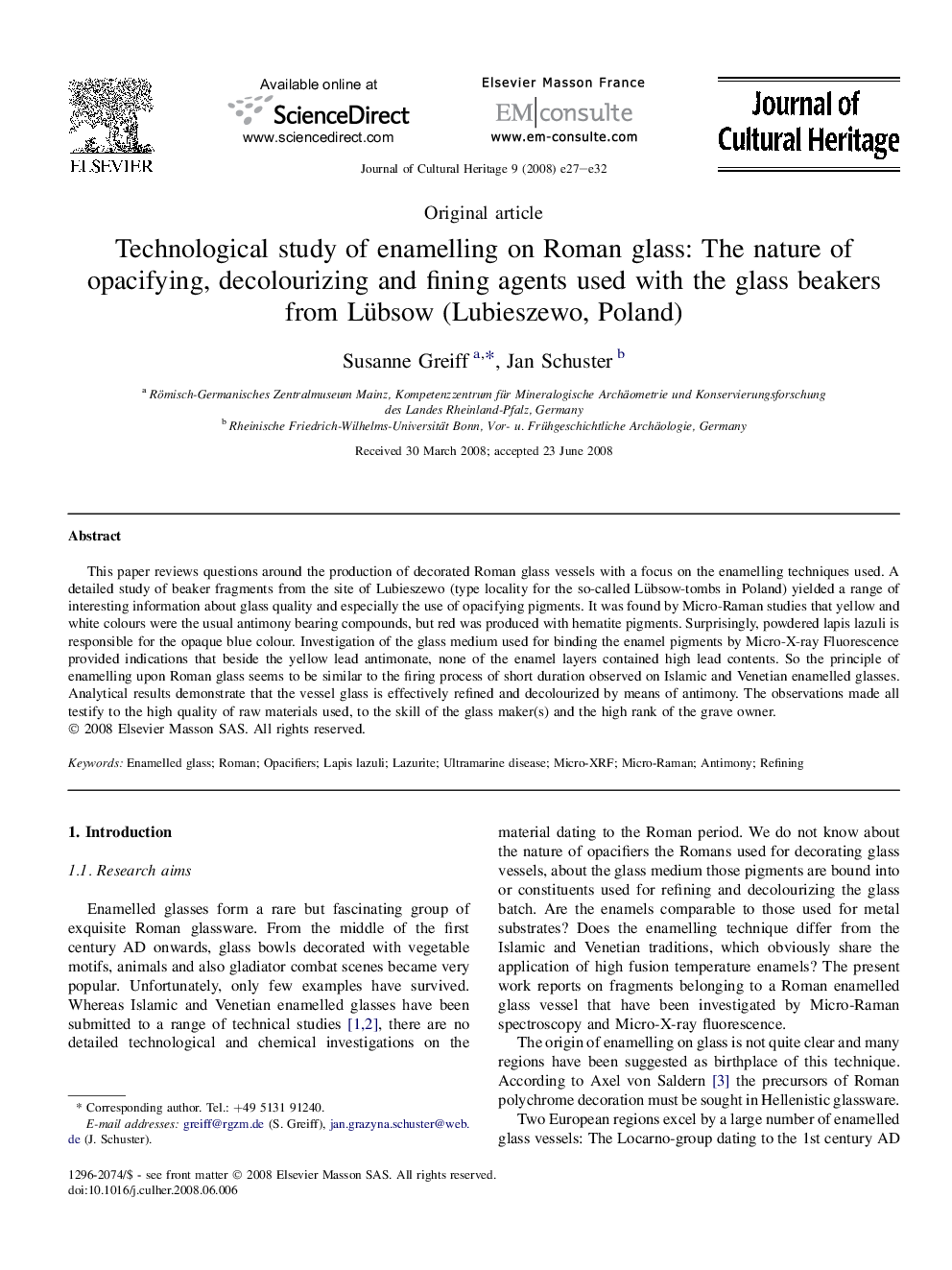| کد مقاله | کد نشریه | سال انتشار | مقاله انگلیسی | نسخه تمام متن |
|---|---|---|---|---|
| 1038671 | 944232 | 2008 | 6 صفحه PDF | دانلود رایگان |

This paper reviews questions around the production of decorated Roman glass vessels with a focus on the enamelling techniques used. A detailed study of beaker fragments from the site of Lubieszewo (type locality for the so-called Lübsow-tombs in Poland) yielded a range of interesting information about glass quality and especially the use of opacifying pigments. It was found by Micro-Raman studies that yellow and white colours were the usual antimony bearing compounds, but red was produced with hematite pigments. Surprisingly, powdered lapis lazuli is responsible for the opaque blue colour. Investigation of the glass medium used for binding the enamel pigments by Micro-X-ray Fluorescence provided indications that beside the yellow lead antimonate, none of the enamel layers contained high lead contents. So the principle of enamelling upon Roman glass seems to be similar to the firing process of short duration observed on Islamic and Venetian enamelled glasses. Analytical results demonstrate that the vessel glass is effectively refined and decolourized by means of antimony. The observations made all testify to the high quality of raw materials used, to the skill of the glass maker(s) and the high rank of the grave owner.
Journal: Journal of Cultural Heritage - Volume 9, Supplement, December 2008, Pages e27–e32